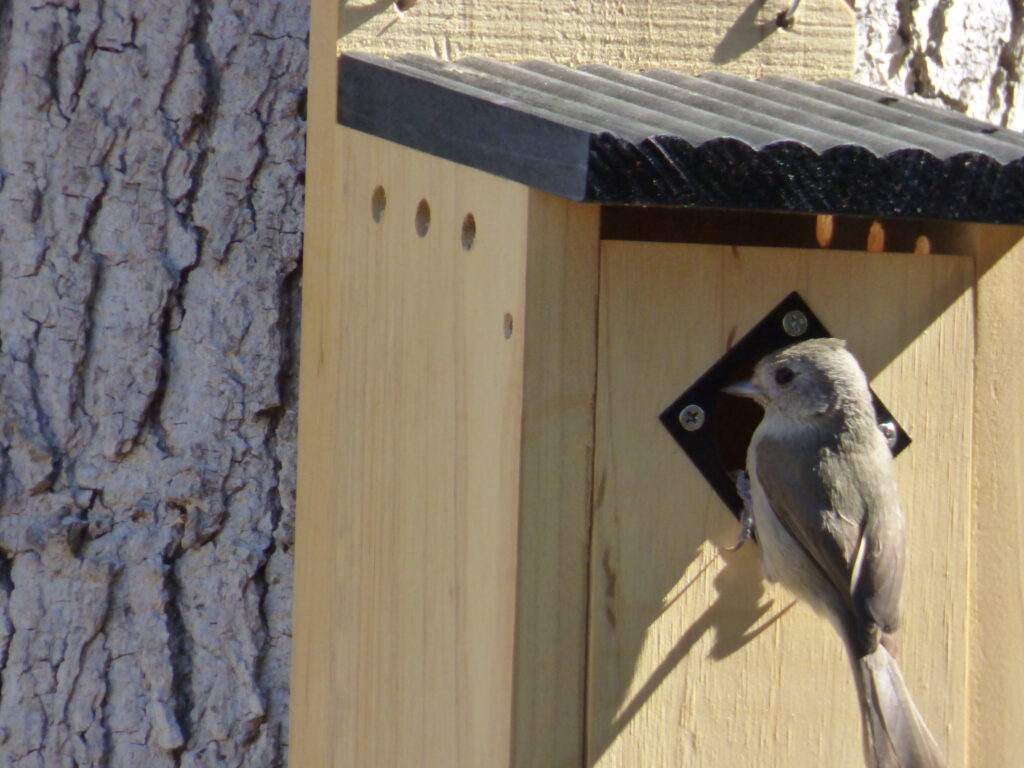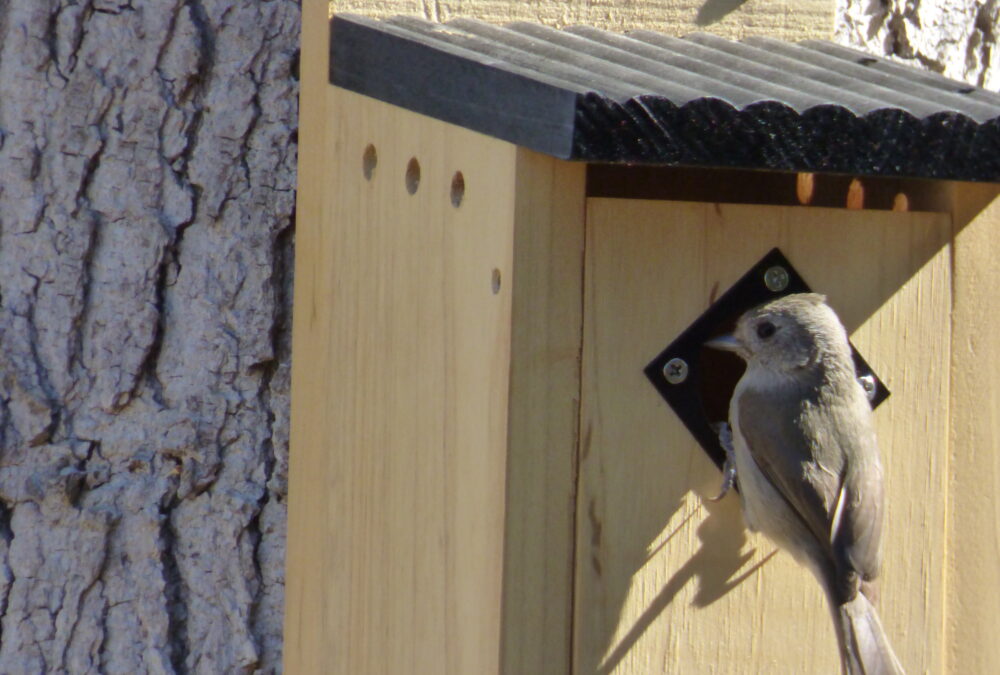
Water
Supplying a clean, dependable, year-round source of water is one of the most rewarding ways to help backyard birds. Most birds prefer a wide, shallow basin. Commercial birdbaths may need to be customized because they are often too deep or too slippery. Flat pebbles or gravel can be used to raise the level of a deeper vessel, or to provide a “shallow end” for wildlife in a garden water feature. Birdbaths don’t have to be fancy, so long as it is stable and won’t slide or tip, but it’s a good idea to pick something that won’t leach lead or plastic chemicals into the water. A tree stump or wooden post can be used for a support.
Birdbaths should be located in a shady location that is screened from predators like hawks and high enough off the ground to protect the birds from cats. Placing the birdbath under a tree but away from brush is ideal.
Regular draining and scrubbing can help prevent the spread of parasites or illness. Making sure the birdbath is near a garden hose makes it easier to keep up with routine cleaning and refilling. Marine or RV hoses are the safest option for all garden use, but especially for birds and animals, because they don’t contain the potentially carcinogenic chemicals used in ordinary hoses.
Even if there is a birdbath, birds may be drawn to other water sources. A piece of bamboo or just a fallen branch from a tree placed at an angle in a pool or pond or fountain will ensure anything that falls in can get out again. It also offers birds additional perching options.
Bird Boxes
Building or buying a bird box is another way to help native birds. Fire clearance regulations and the human desire for tidiness have had a negative impact on birds that depend on dead, decaying and hollow trees.
Native cavity nesters include Bewick’s wren, the oak titmouse and the Western bluebird. All three will readily take up residence in a bird box. A well-built birdbox is deep enough to safely house nestlings and doesn’t have a perch or a big opening—too things that can enable predators to access eggs and nestlings.
Location is just as important to birds as it is to human house hunters. A box in a tree that offers secure perching and vantage points, as well as afternoon shade to keep nestlings from overheating, is ideal.
Bird Safety
Domestic cats take a terrible toll on native birds every year. Our cats enjoy birdwatching as much as we do, but they have to do it from inside the house. A windowsill perch can offer them an opportunity to watch without causing harm, and while cats prey on birds, a few birds also prey on cats. The great horned owl can carry off a sizable domestic cat. Keeping cats inside or in a completely enclosed “catio” is safest for everyone.
Backyard birds sometimes pick inconvenient locations to build a nest, but nests are only in use for a few short weeks. Putting up caution tape and a sign can help remind family members and visitors to stay away from a nest.
The most important thing mountain property owners can do to help protect nesting birds is to put tree trimming on hold until the fall. The Audubon Society recommends avoiding the nesting season entirely and only trimming trees between September and February. When that isn’t possible, it’s important to carefully inspect trees and brush for nests before beginning work. If an active nest is found, work must stop until the birds have fledged. Disturbing or destroying an active nest is against the law.
It is also critically important to eliminate pesticides. Almost all songbirds, even nectar eaters like hummingbirds, depend on insects to feed to their young, while raptors are extremely vulnerable to secondary poisoning from rodenticide. Using poison to eliminate garden pests can also eliminate native birds.
Food
Here at TNT we aren’t fans of putting out birdseed—it’s too easy to attract unwanted visitors, including rodents and rattlesnakes, but planting native plants is a great way to provide food and shelter.
Toyon shrubs offer nectar-rich flowers and decorative red berries that are a favorite with winter birds. Almost all types of sage have flowers that attract hummingbirds and provide nutritious seeds when the flowers are finished. Bush sunflowers and buckwheat provide flowers, seeds and shelter. All of these plants are easy to grow, drought tolerant once established, and attract native pollinators, as well as birds and other wildlife.
We are blessed to have an amazing variety of birds in the Santa Monica Mountains—more than 380 species. Backyard birds range from the tiny black-chinned hummingbird, whose eggs are no bigger than coffee beans, to the red-tailed hawk, one of our biggest native raptors. In a garden with the right habitat, it’s entirely possible to have both.




